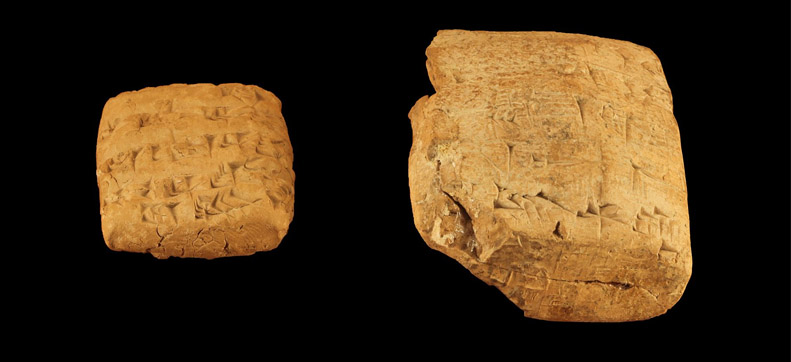The History of Envelopes
Providing privacy and safety for their contents, people have been using envelopes for thousands of years to keep communications secret. Historians believe envelopes were first used by the Chinese in around 3500BC, long before the days of an organised postal service.

Early History
The envelopes that were first used by the Chinese to keep royal communications secret
were nothing like their modern counterparts. The first envelopes were made from clay formed into a spherical shape. The message would be put into the sphere and sealed with more clay, which must be broken on delivery to access the contents.
In this era, the average citizen couldn’t read or write, so it was only the rich who used envelopes to keep communications from prying eyes. It would also have been obvious if anyone had tampered with the letter, as the envelope would have been cracked.
The same concept was used by the Babylonians in 2000BC. Using clay, they created an envelope-like folder rather than a spherical design. Messages were written on tablets and then wet clay was folded over the tablet – in the same way as a paper envelope would fold today – and sealed by pressing the ends together.
It was baked in a kiln to make the envelope harden. The recipient would have to break the clay envelope to retrieve the message inside. Two archaeologists, Jacques de Morgan and Roland de Mecquenem, found examples of early clay envelopes during separate archaeological digs in the Middle East in 1901 and 1907 respectively.
Paper Envelopes
In the 2nd century BC, the Chinese invented the first paper envelopes that were mainly used to give and store gifts of money. A practice also employed by the Japanese who were known to put gifts for bereaved relatives into envelopes, these would be hand-made – not widely produced in this era.
Clay envelopes were still used in the ancient world, even after early forms of paper such as papyrus came on the scene. Clay vessels remained in use to protect documents such as scrolls and proclamations from prying eyes and the elements.
In medieval times, paper began to gain popularity for use as an envelope covering. However, it wasn’t a pre-formed envelope as such but rather an extra sheet of paper folded round the letter with a wax seal. Initially, wax seals were the privilege of royalty and bishops when official decrees were issued.
Hot wax, made from bees’ wax and resin, would be dripped on to the edges to be sealed and stamped with the motif of the sender. Every well-to-do individual, royal court, monarch and religious group had their own unique seal which could be imprinted on to the hot wax, often using a ring.

For example, a “fisherman” signet ring was used by the Pope from around the 13th century until 1842 to seal correspondence. Each Pope had his own signet ring made. The wax seal was replaced by a red ink stamp for correspondence in 1842, although the ceremonial ring is still given to the incoming Pope.
Postal Reforms
At a time when much of the population couldn’t read or write, envelopes were something of a novelty until the 19th century and were mainly used by the rich nobility to send out private letters and invitations to gatherings – the cost of sending mail was very high, so it was out of the question for the average family.
In the United States, in the early days of the postal service in 1775, Sam Adams reportedly paid 22 cents – a massive sum in those days – to send a letter from Boston to Philadelphia. It was a “single letter” comprising just one sheet of paper and sealed with wax.
In the 1800s, when the cost of a letter depended on how many sheets of paper were included, an envelope was charged as an extra piece of paper, so only the wealthy could afford the extra postage. Most ordinary people simply folded and sealed the letter so the address could be written on the blank back – they didn’t bother with an envelope.
In 1837, social reformer Sir Rowland Hill published the document, “Post Office Reform”, which revealed how a stamp with a gum backing and a pre-paid penny wrapper were to be created. Local businesses created them through the lengthy process of cutting and hand-folding an envelope template. However, demand was growing quickly due to the universal postage system and companies manufacturing hand folded envelopes simply couldn’t keep up.
Mass Production
Inventor Edwin Hill revealed his envelope-folding machine in 1840 – patented in 1845. The steam-driven machine cut out the envelope shape and creased and folded it too. This provided something of a revolution for envelopes, as it was possible to mass-produce them mechanically for the first time.
In the US, the first automatic envelope-folding machine was invented by Russell L Hawes, whose invention was patented on 21st June 1853. It could turn out 10,000 to 12,500 envelopes each day. George H Reay was the Brooklyn contractor employed to mass-produce stamped envelopes for the public and for the Post Office Department.
James Green Arnold added a brush to a wooden envelope-making machine to apply gum to the seal but his design never went into production. Two brothers, Henry Swift and D Wheeler Swift, perfected his design and introduced the metal Swift Chain Dryer Machine in 1876. In 1902, inventor Americus Callahan of Chicago was granted a patent for the first envelope with a clear window, so the address could show through from the letter inside.
Today, more than 185 billion envelopes are produced annually in all shapes, sizes and styles. Cavalier Mailing’s envelope services include the high-speed mechanical insertion of letters and flyers. We can also hand-enclose and mail bespoke items. For further information on direct mail letters, flyers and leaflets, brochures, newsletters and price lists, please contact us.

